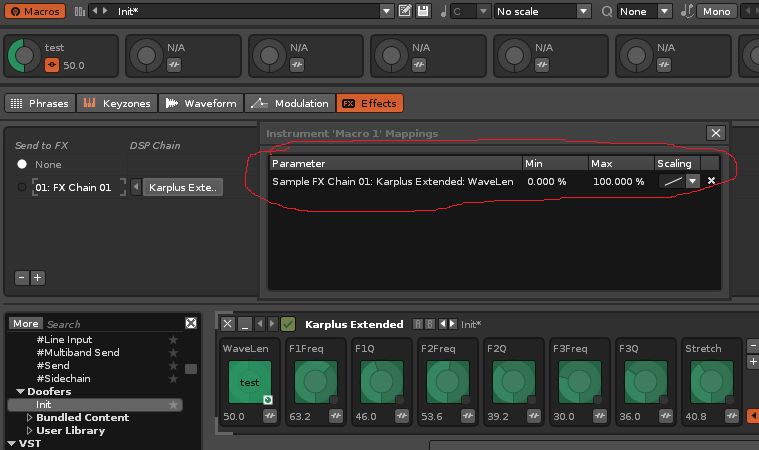Hello,
I create an automatic doofer, display and name the macros using the API,
but I can’t figure out how to automatically create a macro[x] connection with the doofer with the given names. Checked what I’m talking about.

How do I connect it automatically using the API?
mappings.parameter is read-only.
Thanks.
Hello,
So I got around it by creating an empty instrument and uploading it to the current one.
I connected the macro with doofer and it worked.
I write the change of values in the doofer via the observer to the variables that trigger the calculation and rendering of the sample when the change is made.
But 
what is wrong ?
here
it’s true that I haven’t optimized it enough yet.
I will try to read the values without observers. With each change there is a request for a sample render. I will also try to do some speed tests comparing “for” cycles and using “table.foreach”
Most every waveform that is generated instantly, while Renoise is playing back a sequence also transmits that crackling sound. Renoise is not made for synthesizing new samples ‘on the spot’, but sample playback. I don’t know that this is possible. But, I enjoy that the changes can be heard pretty quickly, and can overlook the crackling sound just to hear the sample being updated!
1 Like
Oh yeah, and GIMME GIMME GIMME  Doesn’t need a doofer.
Doesn’t need a doofer.
Not in my sketch 
local sin = math.sin
local buffer = {}
for i=1, 10000000 do
buffer[i] = i
end
local start = os.clock()
for i=1, #buffer do
buffer[i] = buffer[i] + sin(5)
end
print(os.clock() - start)
start=os.clock()
table.foreach(buffer, function(k, v) buffer[k] = v + sin(5) end)
print(os.clock() - start)
1 Like
Oh i see, this function is in 5.1 deprecated 
For … is faster
Pairs is slowest than table.foreach 
testing in Lua5.1.5
